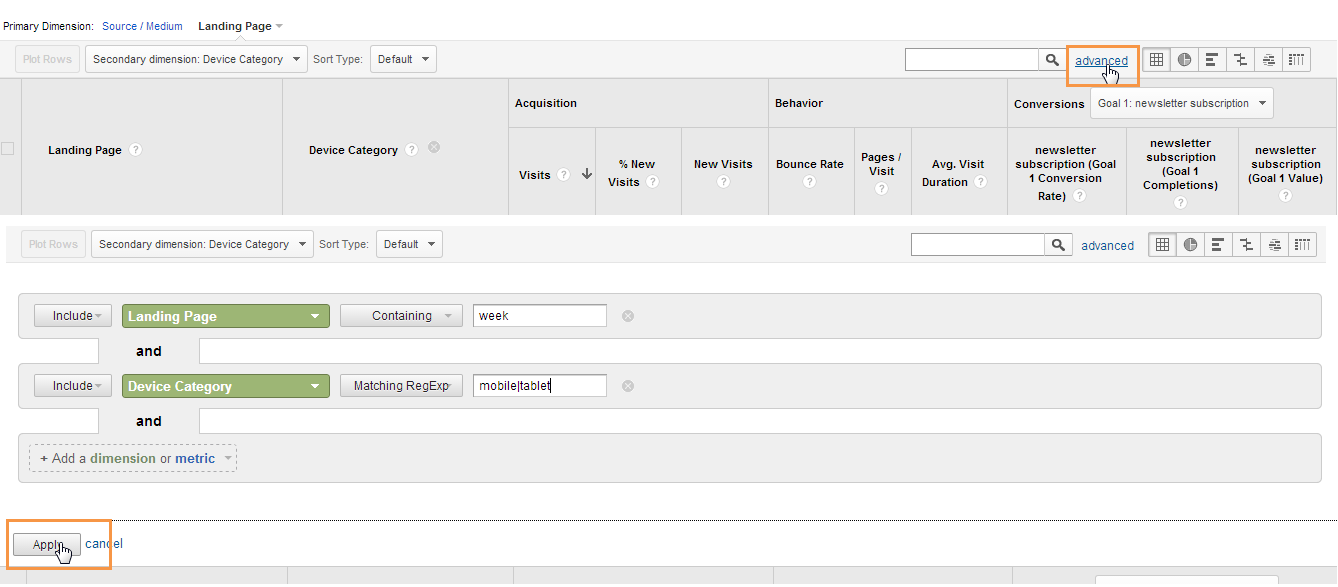Opening the Power of Secondary Measurement Analytics for Boosted Data Insights and Decision-Making
In the world of information analytics, main measurements commonly take the limelight, but the true depth of insights exists within the world of additional dimensions. By taking advantage of the power of additional dimension analytics, organizations can introduce surprise fads, discover connections, and extract more purposeful verdicts from their data.
Significance of Secondary Measurements
Checking out the importance of secondary measurements in analytics reveals the covert layers of information understandings vital for notified decision-making in various domain names. Additional dimensions give a deeper understanding of primary information by providing additional context and viewpoints. By integrating second measurements into analytics, companies can extract extra nuanced and thorough understandings from their datasets.
One secret importance of second dimensions is their capacity to segment and categorize key data, permitting for a much more detailed evaluation of specific subsets within a dataset. When looking at the data as a whole, this division makes it possible for services to recognize patterns, trends, and outliers that could not be apparent. In addition, secondary measurements help in revealing correlations and reliances in between various variables, resulting in even more accurate forecasting and anticipating modeling.
Moreover, second dimensions play an important duty in enhancing data visualization and reporting. By adding additional measurements to visualizations, such as graphs or charts, experts can develop extra useful and insightful depictions of information, facilitating much better communication of findings to stakeholders. Generally, the assimilation of second measurements in analytics is instrumental in unlocking the full potential of information and driving evidence-based decision-making.
Trick Advantages of Making Use Of Second Measurements
Making use of additional dimensions in analytics uses organizations a strategic benefit by enhancing the deepness and granularity of data understandings. By exploring data making use of additional measurements such as time, place, tool type, or user demographics, companies can uncover patterns, fads, and correlations that might otherwise continue to be covert.
Moreover, the usage of additional measurements boosts the context in which primary data is interpreted. By leveraging additional measurements in analytics, companies can harness the complete possibility of their information to drive better decision-making and achieve their company goals.
Advanced Data Evaluation Methods
A deep study innovative information evaluation strategies reveals sophisticated methods for extracting important insights from complicated datasets. One such method is maker discovering, where formulas are utilized to determine patterns within information, anticipate results, and make data-driven decisions. This technique enables for the automation of analytical model building, enabling the handling of huge quantities of information at a quicker speed than conventional methods.
Another advanced strategy is anticipating analytics, which utilizes statistical algorithms and machine understanding strategies to anticipate future results based on historic information. By assessing patterns and fads, services can expect customer actions, market patterns, and prospective risks, encouraging them to make positive decisions.
Furthermore, message mining and belief evaluation her explanation are useful methods for extracting understandings from unstructured information resources such as social media remarks, client reviews, and study reactions. By assessing message data, companies can understand consumer opinions, recognize emerging trends, and enhance their product and services based on comments.
Enhancing Decision-Making With Additional Measurements

Enhancing decision-making via secondary dimensions allows businesses to make more educated and targeted strategic options. For instance, by segmenting consumer data based on additional measurements like purchasing history or interaction degrees, firms can tailor their marketing methods to details target market segments, resulting in enhanced conversion prices and consumer satisfaction. Additional measurements can assist determine correlations and relationships between various variables, making it possible for companies to make data-driven decisions that drive growth and profitability.
Implementing Second Measurement Analytics
When including additional dimensions in analytics, organizations can additional reading open much deeper insights that drive strategic decision-making and boost total performance. Executing secondary measurement analytics needs a structured approach to make certain efficient usage of this powerful device. The primary step is to recognize the crucial metrics and dimensions that straighten with the company's strategic objectives. This involves understanding the details concerns the organization looks for to answer and the information points required to resolve them.

In addition, organizations must utilize advanced analytics devices and modern technologies to improve the procedure of including secondary measurements. These devices can automate data processing, evaluation, and visualization, allowing organizations to concentrate on analyzing insights instead of hands-on information manipulation.
Conclusion
In final thought, additional measurement analytics play a vital function in improving data insights and decision-making processes. By utilizing advanced information evaluation strategies and carrying out additional dimensions efficiently, organizations can open the power of their information to drive critical service choices.
In the realm of data analytics, key measurements commonly take the spotlight, but the real deepness of insights lies within the world of additional dimensions.Utilizing second measurements in analytics provides organizations a strategic benefit by enhancing the depth and granularity of information understandings. By leveraging secondary measurements in analytics, companies can harness the full potential of their information to drive much better decision-making and achieve their organization goals.
Implementing information validation processes and normal audits can assist keep information quality and integrity.
By using advanced information analysis strategies and executing second dimensions effectively, companies can unlock the power of their information to visit this site drive strategic service decisions.
Comments on “The Power of Google Analytics Secondary Dimension: Maximizing Insights”